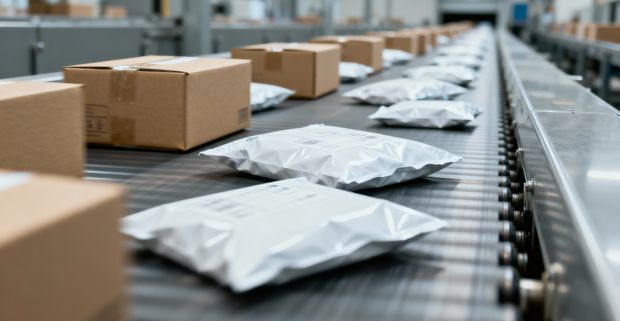Welcome to the Paccurate Blog
Building a Better Packaging Lineup: Choosing the Right Mailers for Cost and Efficiency
Complete guide to poly, kraft, and padded mailers for fulfillment. Learn how mailers reduce costs, improve efficiency, and optimize packaging lineups.
Read The Article

December 2nd, 2025
Paccurate Named to Inc.’s 2025 Best in Business List in Best Social Good
Paccurate earns a spot on Inc.’s 2025 Best in Business list for Social Good, highlighting its impact on waste reduction and sustainable supply chain practices.
Read the Article
October 31st, 2025
Right-Size Your Automation Investment
Don't risk your AutoStore ROI with the wrong size solution. Paccurate and Kardex partner to ensure the right-size solution, maximizing efficiency.
Read the Article
October 24th, 2025
What is a Packing Control System (PCS)?
The Packing Control System is redefining fulfillment, giving shippers full control over how every order is packed.
Read the Article
Paccurate Introduces Resources: The Control Center for Packing Logic
Paccurate, the leader in cost-aware cartonization, announces Resources, a powerful new feature within the Paccurate Packing Control System (PCS) that streamlines implementation and puts packing control directly in the hands of operators. By centralizing box types, packing rules, and carrier rates in one dashboard, Resources accelerate Paccurate deployments by 3-5 weeks while making it easy for operators to manage complex cartonization logic across multiple facilities and customer accounts.
Read the Article
Paccurate Processes 1 Billion Packs
Lessons from Building the First Packing Control System
Read the Article
Is Your Packout Ready for Peak?
Peak season prep is in full swing. You've got new automation moving, your warehouse systems are running smoothly, and inventory is staged and ready for an influx of orders. However, here's the thing that most operations teams miss: they spend months perfecting everything upstream and then overlook the pack station.
Read the Article

A Packing Terminology Guide: Terms Shippers Need to Know
The supply chain and logistics industry has its own language, packed with acronyms, jargon, and terms that aren’t always clearly defined. When it comes to packing, understanding the right terminology can make a big difference in how efficiently and cost-effectively you manage your operation.
Read the Article
Leveraging Cartonization to Maximize the Return of an AMR Investment
In today's fast-paced distribution centers (DCs), every inch of space, every minute of the day, and every dollar spent is under scrutiny. While investing in automation and technology seems like a straightforward path to efficiency, are you truly maximizing your return on investment (ROI)?
Read the Article